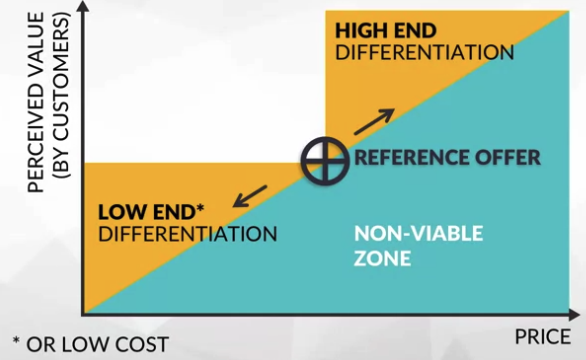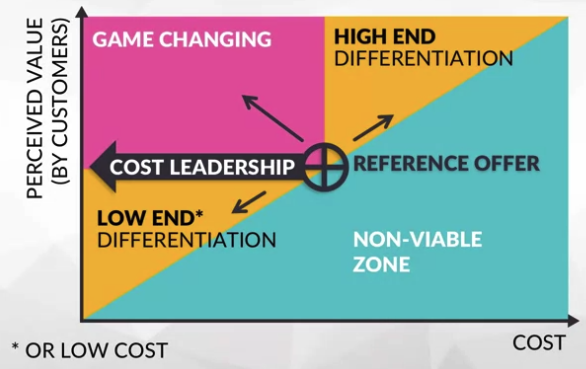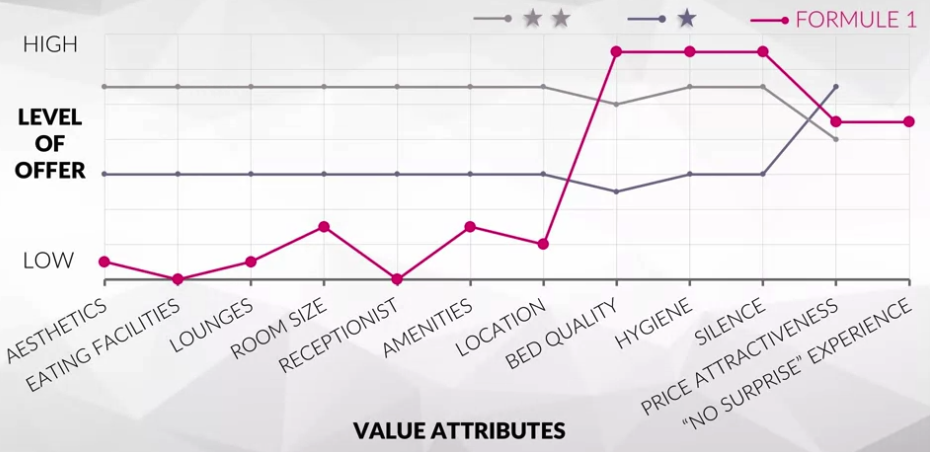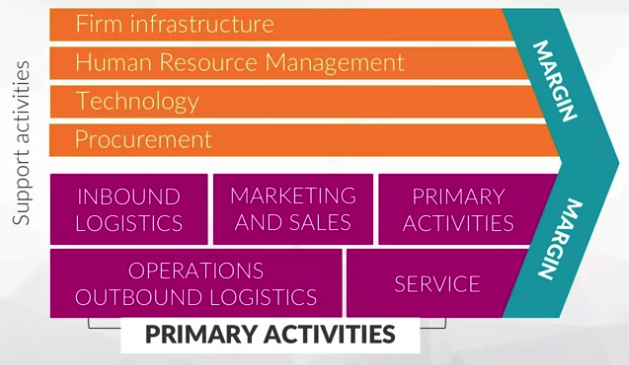Business Model Innovation (HEC Paris)
https://www.coursera.org/learn/business-model
General notes
Business vs strategy
Business model: a description of how a company generates profit
Versus strategy: a business model can be used for competitive analysis, portfolio analysis (corporate strategy), business analysis
Business models
Odyssey 3.14’s business model components
- value proposition (what, for who, price)
- value architecture (how - value chain, resources, competencies)
- profit equation (revenues, costs)
Business model canvas overlap
- customer segments, customer relationships, value proposition = value proposition
- key partners, key activities, key resources, channels = value architecture
- revenue stream, cost structure = profit equation
Innovation
What: Product, process, managerial, business model
Scale: Incremental vs radical
IDEO’s three lenses of innovation (design thinking): desirability, feasibility, viability
How: Anticipate trends; build on customer insights; break an industry belief
Value Proposition (VP)
Often different VPs for different stakeholders
Who? Customer, retailer, third parties, …
What? Products, price
Perceived value vs price/cost


Game changing
JCDecaux: advertising at bus stops → customers: using (bus user), decision making (bus company), paying (advertiser)
Zipcar: differentiate from car ownership (can be lower price and higher value/lower stress)
Value curve
x = value attributes (can be split by customer); y = level of offer (low to high)

Differentiation: create (no surprise), raise (bed quality), eliminiate (receptonist), reduce (room size)
Value Architecture (VA)
How?
Value chain
Can be for a business or an industry
Porter’s original structure:

Porter’s original structure
Each activity adds value
Total of activities > sum
Value produced ≠ cost to produce
Outsourcing: make or buy?
Strategic resources
- Tangible (e.g. financial, physical)
- Intangible (e.g. reputation, technology)
- Human (e.g. skills)
Key competencies
How resources combine → must be rare, non imitable
Profit equation
How much?
Revenue, costs, and capital employed (fixed assets + working capital)
ROCE (return on capital employed) = EBIT / capital employed
14 Directions
- Not exclusive
- Interactive exploration
- Value propositions and value architecture may interact
1: Reduce client price [VP]
- Can you pare down your offer in such a way as to lower your costs and therefore the price for the client?
- Are there elements of costs incurred by the client when ordering or using your product or services that you could decrease?
- Can you offer a part of your product/service for free in order to attract clients?
2: Reduce client’s hassle [VP]
- Which products or services do clients use in addition to your own?
- What are the constraints or complications your clients come across whilst using your products or services?
- How can you minimize these complications?
- Offer a complete solution: payment plan + guarantee + maintenance
- How do clients use your product/service in their value chain? Can you diversify into a different part?
3: Look for non-clients [VP]
- What pushes potential clients to ignore your offer?
- In this case, what do these clients do? Where do they go?
- With what aspects of the offer are your clients always dissatisfied?
- Conscious non-clients: those who actively avoid your product (e.g. minibars)
4: Introduce more functionality or more emotion [VP]
- Is your product or service essentially functional or emotional?
- How can you add a positive emotional component to it?
- Alternatively, how can you go back to its basic functions by removing its emotional content?
5: Search other segments or industries [VP]
- What are the different segments of your business sector?
- What are the codes, rules or proposals from other segments that you could integrate into your value proposition?
- What other business sectors could provide you with inspiration?
- e.g. high cost vs low cost
6: Introduce a third party [VP]
- Could you identify other stakeholders that could be interested by a contact with your current customers?
- For whom could you be an intermediary?
- Could your assets come from a third party (as rooms for Airbnb)?
- e.g. food delivery company linking eaters, restaurants, and riders
- a.k.a. multi-sided platforms
- Often benefit from network effects
7: Modify the revenue stream [VP]
- Could you invoice your clients differently?
- Which third parties would be interested in financing all or part of your offer on a quid pro quo basis?
- Does your offer allow your clients to save or generate income?
- User pay differently (e.g. subscription, freemium); make a third party pay (e.g. advertising); paid savings you create for your customer (e.g. PPA)
8: Introduce technology [VA]
- Do your competitors use a technology you could integrate?
- Which are the existing technologies in other sectors that you could use?
9. Modify one or several steps in the value chain [VA]
- What are the different steps in your value chain?
- Can you change or redesign the way you bring each step into play?
10. Eliminate or add a step in the value chain [VA]
- In which way is this step in the value chain useful? Can you eliminate it? What will be the impact in terms of cost and therefore price?
- Could you add a step to the value chain? What would be the result? Would it bring value to the client?
- e.g. circular economy
11. Leverage strategic resources [VA]
- What are the strategic resources and competencies?
- Which resources do you under-exploit? Could you promote them in another way?
- Have you developed know-how that could be of interest to other companies?
- e.g. flat roofs to solar, gardens
12. Associate with competitors [VA]
- Who are your competitors?
- What are their strong points? What are their strategic resources?
- How are these advantages or resources complementary to yours?
- How could you associate your strengths and neutralize your weak points?
13. Identify supplementors [VA]
- Which offers are used by your clients before, during and after they use your offer?
- Can you integrate these offers in your value proposition? What would be the interest for clients?
- What would be the interest for the company providing this complementary offer?
- e.g. coffeeshops in book shops
14. Find new resources [VA]
- What resources could you source outside the company?
- How can you enlarge your resources base (financial, human, tangibles and intangibles)?
Application
- Choose an industry
- Describe the reference offer(s) → draw a value curve (value proposition)
- Describe the rest of the business model → value arcitecture, profit equation
- Explore the 14 directions
- Draw the new value curve, describe the new business model, show how the profit equation has changed
Trends
- Platforms e.g. Airbnb, Klöckner → trusted third party
- Big Data (AI)
- Usage/access over ownership
- Circular economy
- Good enough products
- Free(mium)
- Experience (the counteract digitisation)
- Crowd/community-based
- Targetting the poorest
